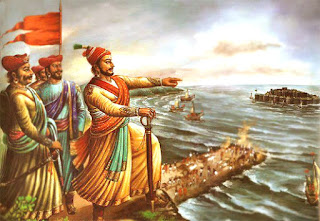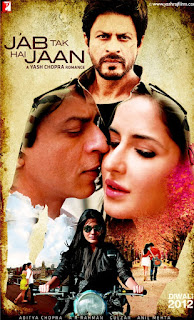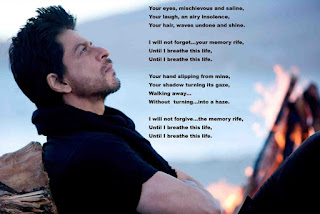chhatrapati Sambhaji Raje Bhosale, Maratha King, Maharashtra, Shivaji Maharaj, Bhosale, The Hindu King In India, Panhala, Forts Of Maharashtra, Sambhaji maharaj wallpapers, Chawa.
Sambhaji Bhosale (14 May 1657 – 11 March 1689) was the eldest son and successor of Chhatrapati Shivaji Raje Bhosale, the founder of theMaratha Empire and his first wife Saibai. Sambhaji's rule was largely shaped by the ongoing wars between the Maratha kingdom and the Mughal Empire, as well as other neighbouring powers such as the Siddis, Mysore and the Portuguese in Goa. Sambhaji was captured, tortured, and executed by the Mughals, and succeeded by his brother Rajaram.

Sambhaji was born at Purandar fort; his mother Saibai, Shivaji's favourite wife, died when he was two, and he was raised by his paternal grandmotherJijabai. At the age of nine, Sambhaji was sent to live with Mughal sardar Mirza Raja Jayasingh, as a political hostage for a treaty Shivaji had signed with the Mughals. Sambhaji was married to Jivubai in a marriage of political alliance, and per Maratha custom she took the name Yesubai. Jivabai was the daughter of Pilajirao Shirke, who had entered Shivaji's service following the defeat of a powerful desmukh who was his previous patron. This marriage thus gave Shivaji access to the Konkan coastal belt.[1]:47. A scholar of Sanskrit and seven other languages, Sambhaji quickly gained a firm political standing in the Maratha kingdom and, by the time of Chhatrapati Shivaji's coronation in 1674, he was able to impress visiting dignitaries with his acumen, intelligence, personality and, most important of all, modesty. Unfortunately, within two weeks after Chhatrapati Shivaji's coronation, his grandmother Jijabai died and Sambhaji was left with nobody to nurture him. And the fact that Shivaji was too busy with the affairs of the state did not help. Chatrapati Sambhaji wrote several poems including a highly prestigious Sanskrit poem book “Budh bhushanam”. He even composed poems in Hindi language. Sambhaji was a very brave, courageous and powerful Man. His personality, attitude, intelligence and qualities had gained him the respect and appreciation of everyone who visited the Maratha Durbar.

In the time preceding Shivaji's death, Sambhaji's behaviour, including alleged irresponsibility and "additction to sensual pleasures" led Shivaji to imprison his son at Panhala fort in 1678. Sambhaji escaped with his wife and defected to the Mughals for a year, but then returned home, unrepentant, and was again confined to Panhala. With Sambhaji imprisoned, after the death of Shivaji his widow Soyarabai Mohite started making plans with various ministers of the administration to crown her son Rajaram as the heir to the Maratha kingdom; on 21 April 1680, the ten-year old Rajaram was installed in the throne. Hearing this news, Sambhaji plotted his escape, and on 27 April, he took possession of the fort[which?] after killing the commander and on 18 June, he acquired control of Raigad. Sambhaji formally ascended the throne on 20 July; Rajaram, his wife Janki Bai, and mother Soyrabai were imprisoned, and Soyarabai executed on charges of conspiracy that October. Annaji Datto, Somaji Datto wanted to oust Sambhaji so that they could get to play a bigger role in the affairs of the state and use it to their advantage. They even poisoned Sambhaji's food, but, Sambhaji was fortunately saved. Their plot was uncovered the first time around, however, Sambhaji forgave them. Still, they conspired the second time too and wanted to arrest Sambhaji at the Panhala Fort, where he was staying at the time of Shivaji's death. They wanted to crown Rajaram in opposition to Sambhaji as Maratha emperor. They forcefully involved Moropant Pingale, Balaji Awji Chitnis and Chitnis's son in their treachery. Soyrabai, mother of Rajaram was also a part of this plan. However Sarnobat, the then Supreme Commander of Maratha forces, Hambirrao Mohite, Rajaram's uncle ( Mother's brother) supported Sambhaji since he was the rightful heir to the throne. At the time of Shivaji's death, there was news of impending attack of Aurangzeb's army on Marathas and at such a crucial juncture, a strong leader like Sambhaji was the need of the hour. Therefore, Hambirrao did not support his own sister and sided with Sambhaji. It was chiefly because of Hambirrao Mohite's support that Sambhaji was able to ascend to his rightful place on the Maratha throne in 1681. However Sambhaji pardoned Moropant Pingale and again re-appointed him on the post of “Peshwa”. Later on there were no differences between Sambhaji and Moropant Pingale as they together participated in the 1681 Burhanpur war. Soyrabai (step-mother of Sambhaji) also felt guilty about what she had done and later died heart-broken. The rest of those who were guilty were either crushed under elephant's leg or thrown down the Raigad fort.
Attack on Burhanpur
Bahadurkhan Kokaltash, a relative of Mughal emperor Aurangzeb was in charge of Burhanpur, a Mughal stronghold. He left Burhanpur with a portion of his army to attend a wedding, giving the charge of the city to Kakarkhan. Sambhaji tricked Mughals into thinking that Marathas were going to attack Surat that had been twice plundered by Shivaji, and Hambirrao Mohite, the commander of the Maratha army surrounded Burhanpur. Sambhaji than plundered and ravaged the city in 1680, his forces completely routed the Mughal garrison and punitively executed captives. The Marathas then looted the city and set its ports ablaze. In contrast to his fathers tactics, Sambhaji did not prohibit rape, torture and violence by his forces. Sambhaji then withdrew into Baglana, evading the forces of Mughal commander Khan Jahan Bahadur. The Mughals were made poorer by about 20 million rupees. Sambhaji also purchased horses from an Arab trader, although the utterly frightened trader, was ready to give away the horses for free. This attack is a perfect example of careful planning, execution, excellent strategic mobility and immense courage of the Marathas under Sambhaji. Marathas safely reached Raigad with all the loot. People of Burhanpur, especially women and children weren’t harmed at all.
War against the Mughal Empire

Sambhaji gave shelter to Sultan Muhammad Akbar, the fourth son of Aurangzeb, who sought Sambhaji's aid in winning the Mughal throne from his emperor father. Upon the death of Shivaji, Aurangzeb came to Deccan in 1680 CE with about half a million troops and 400,000 animals.[citation needed] He defeated the Adilshahi (Sultanate of Bijapur) and Qutubshahi (Sultanate of Golconda) empires, acquiring two generals, Mukarrabkhan and Sarjakhan, from Qutubshahi and Adilshahi empires respectively. He then turned his attention to the Maratha kingdom, engaging Sambaji's armies. The Mughal forces anticipated capturing Ramshej Fort near Nashik within hours, but the fight for the fort was to last seven years.
Within a year or so of Sambhaji's coronation, Sultan Muhammad Akbar took shelter with him and sought Sambhaji's aid in winning the Mughal throne from his father Aurangzeb. On hearing about the death of Shivaji Maharaj, Aurangzeb had come to Deccan in 1680 AD to bring down the Maratha Empire. The Mughal army, which came along totaled about 5,00,000-6,00,000 troops and 4,00,000 animals, which, at that time was perhaps the largest army in the world. With the help of such a massive army, he brought the Adilshah (Bijapur) and Qutubshah (Golconda) empires to his feet. Aurangzeb acquired 2 generals namely Mukarrabkhan and Sarjakhan from Qutubshahi and Adilshahi empires respectively. However, he was not able to bring an end to the Maratha Empire. It was to be the final war in his life and lasted all of 27 years until his death near Aurangabad in 1707. It was a disproportionate battle in all senses. Aurangzeb's army was at least 8 to 9 times larger than Sambhaji's. His whole empire was around 15 times bigger than Sambhaji's. However, Sambhaji led the fight valiantly and did not let Aurangzeb win even a single major victory. The tenacity and sheer will of the Maratha resistance to the Mughal invasion is best illustrated by the story of the Ramshej fort near Nashik. Aurangzeb's commanders claimed that they would win the fort within hours but the fight for the fort lasted for seven years. Sambhaji utilised the available resources very well and made strategically adroit moves by comprehensively defeating the enemies of his kingdom like Siddi of Janjira, Chikkadev Rai of Mysore and Portuguese of Goa and Bassein (Vasai) before they could turn on him and support Aurangzeb. The Marathas led by Sambhaji fought single-handedly against all the enemies. To make matters worse, there was a devastating famine in the region for two years in 1686-87.
War with Siddis of Janjira
Entering the 1680s, the Marathas came into conflict with the Siddis, an African-descended Muslim peoples who held the fortified island of Janjira. At the start of 1682, a Maratha army, later joined by Sambhaji personally, attacked the island for thirty days, doing heavy damage but failing to breach its defenses. Sambhaji then attempted a ruse, sending a party of his people to the Siddis, claiming to be defectors. They were allowed into the fort, and planned to detonate the gunpowder magazine during a coming Maratha attack. However, one of the female "defectors" became involved with a Siddi man, and he uncovered the plot and the infiltrators were executed. The Maratha then attempted to build a stone causeway from the shore to the island, but were interrupted halfway through when the Mughal army moved to menace Raigad; Sambhaji returned to counter them, and his remaining troops were unable to overcome the Janjira garrison and the Siddi fleet protecting it.
The Portuguese and English
Having failed to take Janjira, in 1682 Sambhaji sent a commander to seize the coastal fort of Anjadiva instead. The Marathas seized the fort, seeking to turn it into a naval base, but in April 1682 were ejected from the fort by a detachment of 200 Portuguese. This incident led to a larger conflict between the two regional powers.
The Portuguese colony of Goa at that time provided supplies to the Mughals, and allowed them to use the Portuguese ports in India, and pass through their territory. In order to remove this support from the Mughals, Sambhaji undertook a campaign against Portuguese Goa in late 1683 storming the colony and taking its forts, while local Goans uprose against the Europeans. The situation for the colonists became so dire that the Portuguese viceroy, Francisco de Távora, conde de Alvor went with his remaining supporters to the cathedral where the crypt of Saint Francis Xavier was kept, where they prayed for deliverance. The viceroy had the casket opened, and gave the saint's body his baton, royal credentials, and a letter asking the saint's support. Sambhaji's Goa campaign was checked by the arrival of the Mughal army and navy in January 1684, forcing him to withdraw.
Meanwhile, in 1684 Sambhaji signed a defensive treaty with the British at Bombay, realising his need for British arms and gunpowder, particularly as their lackings of artillery and explosives impeded the Maratha's ability to lay siege to fortifications. Thus reinforced, Sambhaji proceeded to take Pratapgad and a series of forts along the Ghats.
War with Mysore
Much like his father Shivaji's Karnataka campaign, Sambhaji attempted in 1681 to invade Mysore, then a southern principality ruled by the wodeyar Chikkadevaraja. Sambhaji's large army was repelled, as had happened to Shivaji in 1675. The Chikkadevraja later made treaties and rendered tribute to the Maratha kingdom during the conflicts of 1682-1686. The Chikkadevraja however began to draw close to the Mughal empire and ceased to follow his treaties with the Marathas. In response, Sambhaji invaded Mysore in 1686, accompanied by his Brahmin friend and poet Kavi Kalash.
Hearing about the intrusion of Chikkadev Rai into Maratha territory, Sambhaji had sent his Diwan to Chikkadev Rai. But the Diwan was insulted in the Mysore Durbar. Seeing this, Sambhaji became infuriated and decided to teach Chikkadev Rai a lesson. Marathas marched into the Tamil state. But, Chikkadev Rai too put on his armour and decided to face Sambhaji, before Marathas could reach Mysore’s capital. Both the armies were face-to-face and poised for a battle. All of a sudden, arrows started pouring in from the Mysore army. They started inflicting fatal wounds on the Maratha army. The long-range, deadly arrows from the Mysore bowmen filled the skies. Thus, realizing the casualties, Sambhaji retreated for the time being. Sambhaji then ordered all the local cobblers to prepare rubber clothing. Then, these garments were laden with oil. Marathas then started making bows and arrows using a particular local tree. These bows and arrows were ordinary and crude. A piece of cloth was wound at the arrows’ head and it was set on fire using oil. Thus, Sambhaji transformed ordinary arrows into fiery arrows. But still the Mysore bowmen had longer, stronger, better quality bows and arrows than the Marathas. Marathas then started attacking the forts in Mysore. The Mysore bowmen started striking from the forts. But, their lethal arrows proved futile, as the oil-laden rubber clothing neutralized the effects of the arrows. Then, Marathas started striking with their arrows. These arrows would strike the explosives and gunpowder store, causing explosions and many casualties. The forts of Chikkadev Rai fell into the hands of the Marathas one by one. Thus, Chikkadev Rai was brought down to his knees and he agreed to abide by the terms of the Marathas.
Capture and execution

The 1687 Battle of Wai saw the Maratha forces badly weakened by the Mughals. The key Maratha commander Hambirao Mohite was killed, and troops began to desert the Maratha armies. Sambaji's positions were spied upon by Shirke clan Marathas who had defected to the Mughals, and in February 1689 Sambhaji and 25 of his advisors were captured by the Mughal forces of Muqarrab Khan in a skirish at Sangameshwar. The captured Sambhaji and Kavi Kalash were taken to Bahadurgad, where Aurangzeb humiliated them by parading them wearing clown's clothes, and they were subjected to insults by the Mughal soldiers. Accounts vary as to the reasons for what came next: Mughal accounts state that Sambhaji was asked to surrender his forts, treasures, and names of Mughal collaborators with the Marathas, and that he sealed his fate by insulting both the emperor and the Islamic prophet Muhammad during interrogation, and was executed for having killed Muslims. Maratha accounts instead state that he was ordered to bow before Auguranzeb and convert to Islam, and it was his refusal to do so that lead to his death, lending a religious martyrdom to the narrative. By doing so he earned the title of Dharmaveer ("protector of dharma").Aurangzeb ordered Sambhaji and Kavi Kalash to be tortured to death; the process took over a fortnight and included plucking out their eyes and tongue, pulling out their nails, and removing their skin. On March 11, 1689, Sambhaji was finally killed, reportedly by tearing him apart from the front and back with wagh nakhe (metal "tiger claws"), and was beheaded with an axe at Tulapur on the banks of the Bhima river, near Pune.
Some accounts state that Sambhaji's body was cut into pieces and thrown into the river, or that the body or portions were recaptured by the Maratha and cremated at the confluence of rivers at Tulapur. Other accounts state that Sambhaji's remains were fed to the dogs.

























.jpg)




.jpg)

